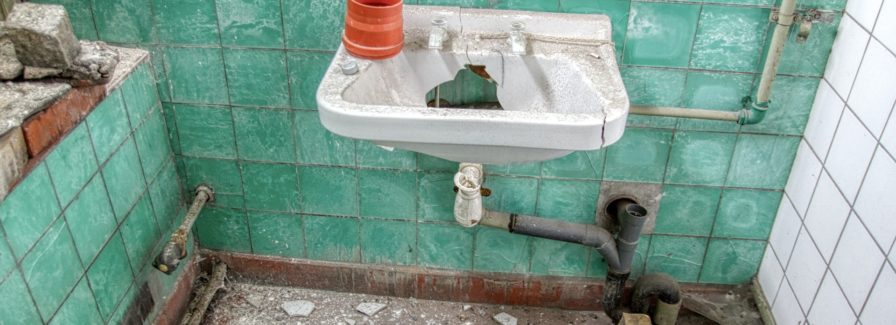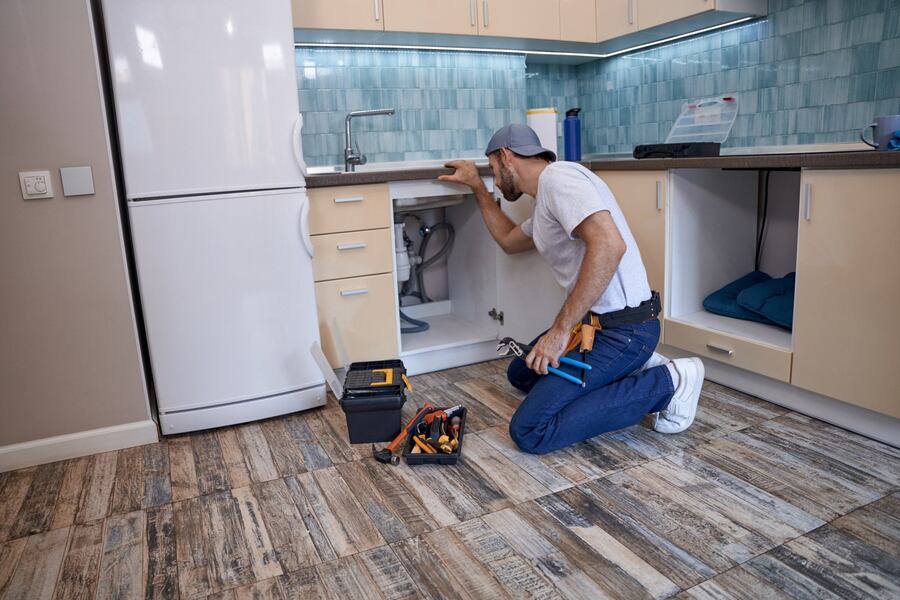Resolving Plumbing Issues in Older Homes: Effective Strategies
Resolving Plumbing Issues in Older Homes: Effective Strategies
Blog Article
Listed here in the next paragraphs you can find additional good quality answers all about Plumbing Issues in Older Properties and How to Fix Them.

Older homes typically include beauty, personality, and history, but they can additionally bring a host of plumbing issues. Whether you're managing aging pipes, low tide stress, or leaks, recognizing exactly how to address these usual issues is crucial to keeping a risk-free and functional home. In this overview, we'll explore the regular plumbing challenges encountered by older homes and supply practical options to keep your pipes in top form.
Understanding Common Pipes Issues
Aging Pipelines
Among one of the most common problems in older homes is maturing pipelines. Depending upon the period in which your home was constructed, the pipelines might be made from products that have weakened with time, such as galvanized steel, cast iron, or perhaps lead. These materials can wear away, come to be brittle, or create leakages, resulting in water damages and potential health hazards.
Water Quality Testing
Older pipes can affect the quality of your water. Conduct a water quality examination to look for contaminants such as lead, rust, or other impurities that may be introduced by aging pipelines.
Solutions for Usual Plumbing Issues
Replacing Aging Pipes
If your home has old, degrading pipelines, consider changing them with modern materials like copper or PEX. This can be a substantial investment, yet it will certainly protect against future concerns and improve the security and integrity of your pipes system.
Fixing Low Water Pressure
To repair low tide stress, beginning by cleaning or replacing old components and eliminating mineral accumulation in the pipelines. If the trouble lingers, it might be needed to change areas of rusty pipelines.
Fixing and Changing Dripping Pipelines
For tiny leakages, you can make use of pipeline clamps or epoxy putty as a temporary fix. However, it's best to replace dripping pipelines totally to prevent additional damages.
Updating Components
Updating old components to contemporary, water-efficient models can boost your home's pipes efficiency and minimize water usage. Try to find fixtures with the WaterSense tag for the very best effectiveness.
Handling Pipe Corrosion
If your pipes are worn away, changing them with corrosion-resistant products like copper, PVC, or PEX is the most effective option. Routine evaluations and water quality maintenance can aid prevent better deterioration.
Low Water Pressure
If you're experiencing low tide pressure, maybe because of mineral deposits, rust inside the pipelines, or old fixtures that are no more operating successfully. This can be a significant hassle, especially in locations like showers and sinks.
Leaking Pipes
Leakages are one more frequent concern in older homes, usually triggered by corroded or damaged pipes. Even tiny leakages can lead to substantial water damage, mold development, and enhanced water costs otherwise attended to promptly.
Obsolete Fixtures
Obsolete plumbing components such as taps, toilets, and showerheads not just look old however might likewise be much less effective, vulnerable to leakages, or incompatible with modern-day plumbing criteria.
Pipe Deterioration
Corrosion is an usual issue in older pipelines, especially those made from galvanized steel or actors iron. Rusty pipes can restrict water flow, trigger staining, and at some point result in leakages or pipe bursts.
Analyzing the Condition of Your Pipes
Checking Noticeable Pipes
Begin by inspecting any kind of noticeable pipes in your house, such as those in basements, crawl spaces, or under sinks. Seek indications of rust, leaks, or rust, which can show underlying issues.
Looking for Leakages
Check for leaks by inspecting locations around taps, commodes, and under sinks. You can additionally monitor your water meter prior to and after a duration of no water utilize to find surprise leaks.
When to Call an Expert
While some pipes problems can be handled with DIY remedies, there are times when it's ideal to hire an expert. If you're handling significant leaks, comprehensive corrosion, or are not sure concerning the problem of your pipes, a certified plumbing technician can provide skilled analysis and repair.
Preventive Maintenance Tips
Routine Assessments
Consistently inspect your plumbing system for indications of deterioration. Capturing problems early can stop pricey fixings down the line.
Water Stress Regulation
Ensure your water pressure is within the recommended range to avoid stressing your pipes and components. A plumbing can set up a pressure regulator if needed.
Water Quality Maintenance
Mount water filters or conditioners if your water quality is poor. This can protect your pipes and components from damages triggered by difficult water or pollutants.
Positive Pipeline Replacement
If your home has very old pipelines, take into consideration aggressive substitute before major issues arise. This can conserve you from emergency situation repair services and water damage.
Conclusion
Dealing with plumbing concerns in older homes calls for a mix of watchfulness, preventive upkeep, and prompt upgrades. By comprehending the typical challenges and knowing when to look for specialist assistance, you can ensure your pipes system stays practical and trusted for several years to come.
Common Plumbing Issues in Older Homes and How to Fix Them
Owning an older home in Australia comes with its unique charm and a set of challenges, especially when it comes to plumbing. The Sunshine Coast has many older properties that can harbour plumbing problems that aren t just inconvenient but potentially costly. Here s a look at some common plumbing issues in older homes and expert advice on how to handle them.
Outdated Piping Materials
Many older homes were built with galvanised steel, cast iron, or even lead pipes, materials that are far from ideal by today s standards. Galvanised pipes are prone to corrosion and clogging, while lead pipes pose serious health risks.
How to Fix:
Replacing old pipes is a job for a professional. Upgrading to copper or PVC piping not only enhances water quality and flow but also increases the property s safety and value. If you suspect your home has outdated materials, a licensed plumber can conduct a thorough inspection and recommend the best course of action.
Corrosion and Pipe Degradation
Over time, exposure to water and minerals can cause pipes to corrode, leading to leaks, bursts, and water contamination. Corrosion is especially common in homes over 50 years old.
How to Fix:
Regular inspections can catch early signs of corrosion. If corrosion is found, the affected section of piping often needs to be replaced. For homes with extensive corrosion, a complete plumbing overhaul might be necessary. It s crucial to consult with a plumbing expert to understand the extent of the issue.
Tree Root Intrusion
Older neighbourhoods usually have mature trees whose roots can intrude into pipe lines, causing blockages or damage. This is particularly problematic for sewer lines, where roots seek out water sources.
How to Fix:
A plumber can use a specialised camera to inspect sewer lines for root intrusion. If roots are a problem, methods like root cutting or hydro-jetting can clear the obstruction. In severe cases, part of the pipe may need replacing. Consider root barriers around the piping to prevent future issues.
Inadequate Water Pressure
Low water pressure in older homes can be due to various factors, including corroded water lines, sediment build-up in pipes, or outdated fixtures.
How to Fix:
First, check if the low pressure is isolated to one area or throughout the house. Replacing old fixtures can sometimes resolve the issue. However, if the problem is more widespread, it might be due to sediment or corrosion. Flushing the system or replacing the affected pipes usually restores normal pressure. Again, a professional assessment is advisable.
Outdated Fixtures
Older homes often feature fixtures that are not only visually dated but functionally inefficient. This includes everything from toilets and taps to showerheads and washing machine hoses.
How to Fix:
Updating these fixtures can improve both water efficiency and the aesthetic appeal of your home. Modern fixtures are designed to conserve water, which can significantly reduce your water bill and lessen your environmental impact.
Conclusion
Maintaining the plumbing in an older home requires a proactive approach. Regular checks and updates are key to preserving these beautiful properties. If you re facing plumbing issues in your older home, it s best to call on experienced professionals like Green & Gold Plumbing & Gas. With the right expertise, even the most daunting plumbing problems can be resolved, ensuring that your home s character is maintained while its functionality is enhanced.
https://gandgplumbing.com.au/common-plumbing-issues-in-older-homes-and-how-to-fix-them/

As a keen reader about , I was thinking sharing that editorial was a good idea. Enjoyed reading our write up? Please share it. Help others check it out. We thank you for reading our article about Main Plumbing Issues Found in Old Houses.
Details Report this page